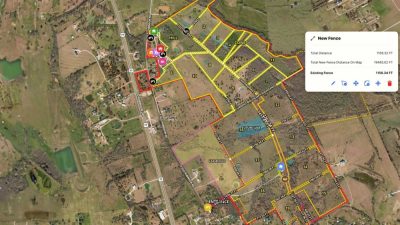
Choosing the right mortgage is one of the most important financial decisions you’ll make when buying a home. The loan type you choose will impact your monthly payments, interest rates, loan duration, and overall affordability. With so many mortgage options available, it’s essential to understand how each works and determine which one aligns best with your financial goals and homeownership plans.
In this guide, we’ll break down key factors to consider when choosing a mortgage, explore different loan types, and provide expert tips to help you choose the right mortgage for your needs.
1. Assess Your Financial Situation
Before choosing a mortgage, you need to take an honest look at your financial health to determine how much you can afford and what type of loan is best for you. Lenders evaluate multiple financial factors before approving a mortgage, so understanding these elements in advance will give you a clearer idea of where you stand.
✅ Check Your Credit Score – A higher credit score means lower interest rates and better loan terms. Most conventional loans require a credit score of at least 620, while FHA loans may allow for scores as low as 500-580.
✅ Calculate Your Debt-to-Income (DTI) Ratio – Your DTI compares your monthly debt payments to your gross monthly income. Lenders prefer a DTI below 43%, but some loan programs allow up to 50% DTI.
✅ Determine Your Down Payment – Conventional loans typically require 5-20% down, while FHA loans need as little as 3.5%. VA and USDA loans allow for zero down payment.
✅ Set a Monthly Budget – Your mortgage payment is just one part of homeownership. Factor in property taxes, homeowner’s insurance, HOA fees, and maintenance costs to get a realistic estimate of what you can afford.
📌 Tip: Use a mortgage affordability calculator to determine how much you can borrow based on your income, debts, and down payment.
2. Understand Different Types of Mortgages
There are various types of mortgages, and choosing the right mortgage depends on factors like your credit score, income stability, and homeownership goals. Understanding these options will help you select the loan that best suits your financial situation.
Fixed-Rate vs. Adjustable-Rate Mortgages (ARM)
| Mortgage Type | How It Works | Best For |
|---|---|---|
| Fixed-Rate Mortgage | The interest rate stays the same for the entire loan term, offering predictable monthly payments. | Buyers who plan to stay in the home long-term and prefer stability. |
| Adjustable-Rate Mortgage (ARM) | The interest rate starts low for a fixed period (e.g., 5 years) and then adjusts periodically based on market rates. | Buyers who plan to sell or refinance before the adjustable period begins. |
💡 Fixed-rate mortgages are ideal for homeowners who want consistent payments and long-term security, while ARMs offer lower initial rates but come with the risk of future increases.
Government-Backed vs. Conventional Loans
Government-backed mortgages are loans insured by the federal government, making them easier to qualify for than conventional loans. However, they come with specific eligibility requirements and restrictions.
| Loan Type | Key Features | Best For |
|---|---|---|
| Conventional Loan | Requires 5-20% down, lower interest rates, and stricter credit requirements. | Buyers with good credit and savings for a down payment. |
| FHA Loan | Requires 3.5% down, more lenient credit score requirements (580+). | First-time homebuyers or those with lower credit scores. |
| VA Loan | No down payment required, no PMI, available for military veterans. | Veterans and active military personnel. |
| USDA Loan | No down payment required, available for homes in eligible rural areas. | Buyers in rural areas with low to moderate income. |
📌 Tip: If you qualify for VA or USDA loans, you can buy a home with zero down payment, saving you thousands of dollars upfront.
3. Choose the Right Loan Term
The length of your mortgage loan (loan term) affects your monthly payments, total interest costs, and how quickly you build equity in your home. Selecting the right term will depend on your income, savings, and long-term financial goals.
| Loan Term | Pros | Cons |
|---|---|---|
| 30-Year Mortgage | Lower monthly payments, making it easier to afford. | Higher total interest paid over time. |
| 15-Year Mortgage | Lower interest rates, allows you to pay off the home faster. | Higher monthly payments, which may strain your budget. |
📌 Tip: If you can afford the higher payments, a 15-year mortgage can save you tens of thousands of dollars in interest over time.
4. Compare Mortgage Lenders and Interest Rates
Not all lenders offer the same mortgage rates and terms. Shopping around can help you find the best deal and save thousands of dollars over the life of your loan.
🔹 Compare Interest Rates – Even a 0.5% difference in interest rates can result in significant savings.
🔹 Look at Loan Fees – Consider origination fees, closing costs, and discount points.
🔹 Check Lender Reviews – Choose a lender with a strong reputation for customer service.
🔹 Get Pre-Approved – A mortgage pre-approval strengthens your offer and provides a clear homebuying budget.
📌 Tip: Use an online mortgage comparison tool to find the lowest rates from multiple lenders.
5. Consider Additional Costs Beyond the Mortgage
Many first-time homebuyers focus only on the mortgage payment, but homeownership comes with additional costs that need to be factored into your budget.
✔ Property Taxes – Varies by location; typically 1-2% of home value annually.
✔ Homeowners Insurance – Required by lenders, protects your property.
✔ Private Mortgage Insurance (PMI) – Required if your down payment is less than 20%.
✔ HOA Fees – If buying in a neighborhood with a homeowners association.
✔ Maintenance and Repairs – Budget at least 1-3% of the home’s value per year.
📌 Tip: Use a home affordability calculator that includes taxes and insurance to get an accurate estimate of your total monthly costs.
Final Thoughts on How to Choose the Right Mortgage
Selecting the right mortgage is a crucial step in the homebuying process. By carefully evaluating your financial situation, understanding loan options, and comparing lenders, you can make an informed decision that aligns with your long-term goals.
✔ Assess your financial health (credit score, DTI, down payment, budget).
✔ Understand different mortgage types (fixed, ARM, conventional, FHA, VA, USDA).
✔ Choose the right loan term (30-year vs. 15-year).
✔ Compare lenders and interest rates to find the best deal.
✔ Factor in additional homeownership costs beyond the mortgage payment.
📌 Next Steps: Ready to take the next step? Check out our guide on How to Budget for a Home Purchase to ensure you’re financially prepared for homeownership!
🚀 With the right mortgage, you’ll be on the path to homeownership with confidence and financial security!








